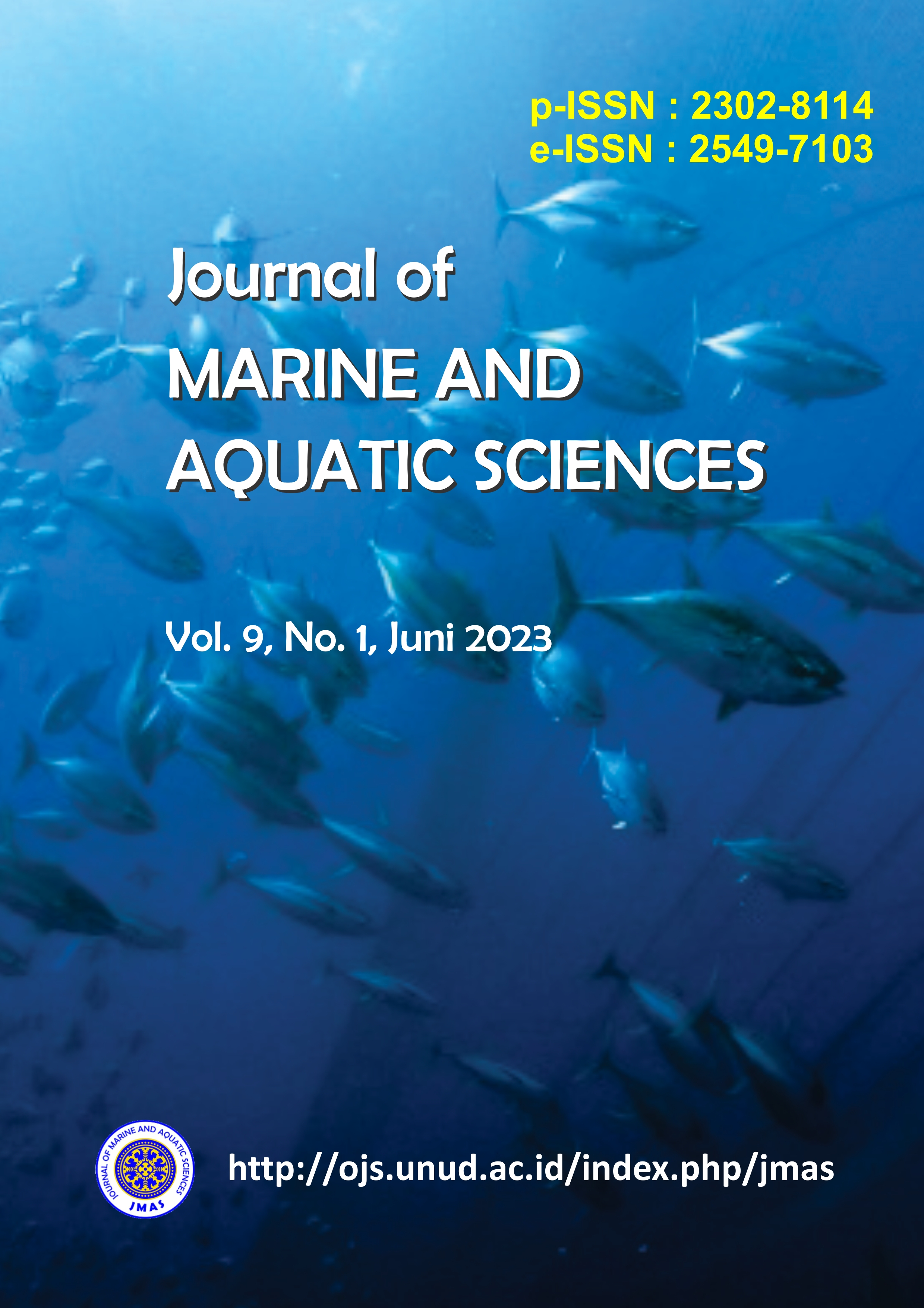Analisis Kesehatan Terumbu Karang Berdasarkan Kelimpahan Ikan Herbivora Di Perairan Labuan Bajo
Abstract
Coral reef ecosystem is one of the ecosystems located in coastal areas which has a very important role for the community, both economically and ecologically. Rock or scleractinian corals are the main building blocks of coral reef ecosystems. The connectivity of coral reef ecosystems with other ecosystems has a very large influence on the life cycle of reef fish such as spawning, rearing, foraging, and sheltering places. Herbivorous fish are that eat turf algae or macroalgae that inhibit the recruitment of new corals. Labuan Bajo is one of the tourism destinations in Indonesia, especially marine tourism. Coral reefs in Labuan Bajo cover 10.8% of the total area of coral reefs in Indonesia located in Nusa Tenggara. The purpose of this study was to determine the health of coral reefs in the waters of Labuan Bajo. This research will be carried out from September to October 2021. The coral reef data collection method used is the Underwater Photo Transect (UPT), and for reef fish is using the Underwater Visual Census (UVC) method. Based on the research results, the percentage of hard coral is 20.16% of the total stations and rubble is 32.24%. The abundance of fish in Labuan Bajo waters ranges from 1608.89 - 4600.00 ind/ha, where the average abundance is 2919.78 ind/ha. All stations got a health index value of 3, this is indicated by the low coral cover, high coral resilience, and low herbivorous fish biomass obtained.
Downloads

This work is licensed under a Creative Commons Attribution 3.0 International License.
Copyright 2012 - 2023 Journal of Marine and Aquatic Sciences (JMAS)
Published by Fakultas Kelautan dan Perikanan Universitas Udayana, Denpasar, Bali, Indonesia
JMAS (p-ISSN 2302-8114; e-ISSN 2549-7103)


